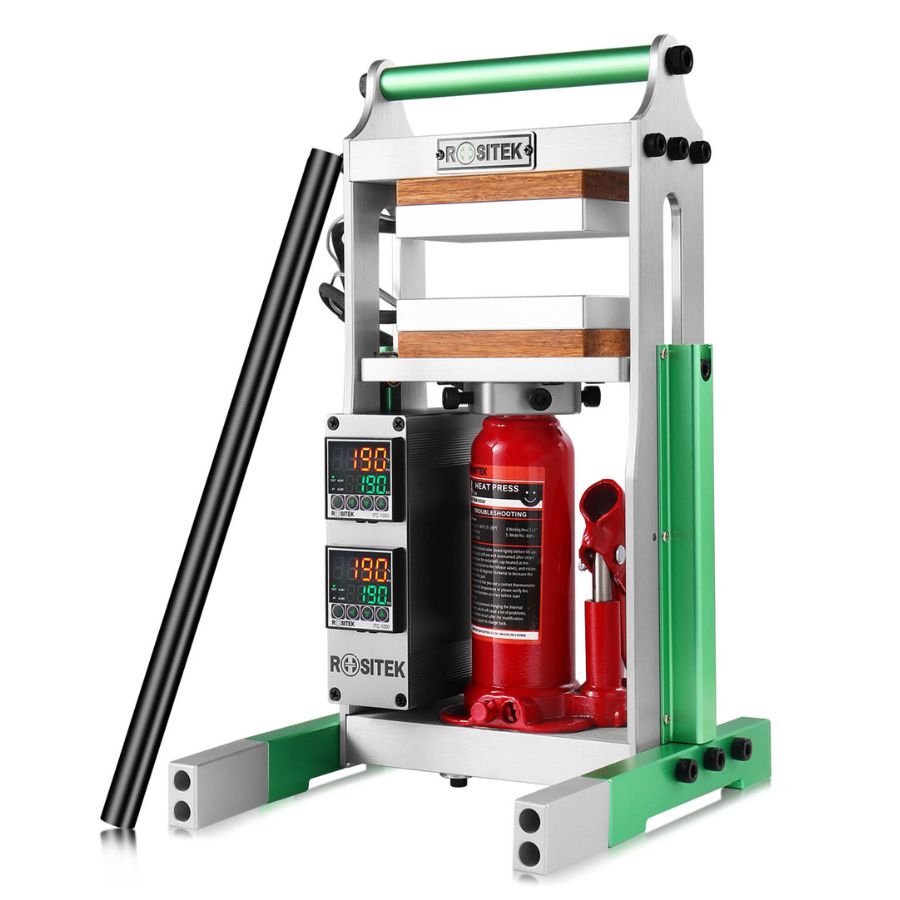What Temperature Should I Press My Rosin at?
Posted by DABPRESS TEAM

When it comes to pressing your own rosin, choosing which temperature is best to extract with maybe the most widely debated variable in the rosin community. The first step to selecting the right temperature to perform your rosin extraction will depend on your starting material. Dried flowers generally yield the best results when pressed between 180-220F. Lower temperature extractions frequently result in a more stable consistency, such as "budder" "crumble" or "batter," while pressing at the higher end of the temperature spectrum may result in "sap" "shatter" or "taffy."
There are no hard rules when it comes to choosing a temperature, but just to generalize, when pressing flowers, lower temperatures will result in a more flavorful, terpene rich extract, at some relative expense of overall yield. Terpenes are the aromatic oils responsible for the incredible spectrum of flavors in your rosin, and part of what makes squishing your own extracts such an enjoyable process.
There are two trains of thought when it comes to pressing rosin, some prefer to use lower temperatures over a longer period of time, while others opt for higher temperatures with quicker pressings. We feel that the terpene profile tends to most noticeably degrade above temperatures of 250F, but as always, experimentation is highly encouraged! It's always suggested to double-check your plate temperature in comparison to the PID for the most accurate extraction. A common cooking probe thermometer or K-type thermocouple works well for measuring this.
Pressing a few smaller samples of flower, perhaps one gram at a time, at various temperatures, is a quick way to compare the different qualities of rosin samples before committing to a larger extraction. This makes it easy to check for flavor and yield, as each unique phenotype will have its own nuances just waiting to be concentrated into beautiful rosin.
Because temperatures can heavily affect yield, higher temperature extractions, around 250F are excellent for producing oils to be later prepared for edibles, as those terpenes would be otherwise lost during further decarboxylation of the oil.
When it comes to rosin pressing dry sift and hashes, these products have already been pre-processed and concentrated, which means pressing these materials can be achieved with lower temperatures than those used for flower rosin, as the oil does not have to navigate through as much plant material.
When pressing sifts or various types of hashes, 140-180F is a good starting point. The highest quality starting material may be pressed at even lower temperatures. It's important to experiment with PSI, temperature, and duration of extraction to find your ideal balance when pressing hash rosin. Keep in mind that like flower rosin, when pressing hash the end-product consistency will change based on the temperature used during the extraction and the duration of the extraction. You can again expect a budder consistency with a lower temperature squish, and other consistencies are likely to auto-budder after a few days.
We hope this helps you achieve some great quality rosin to enjoy, and as always, keep on squishing!


